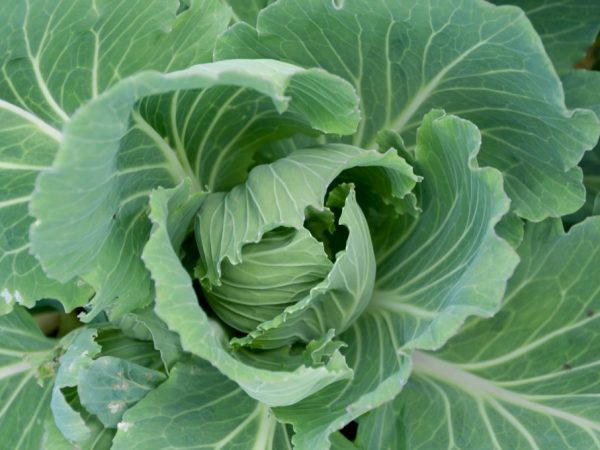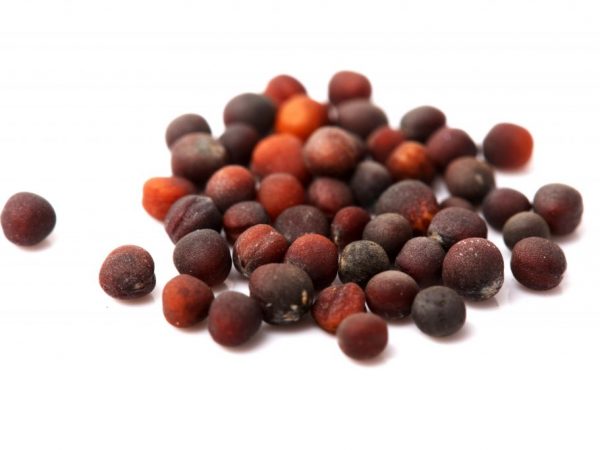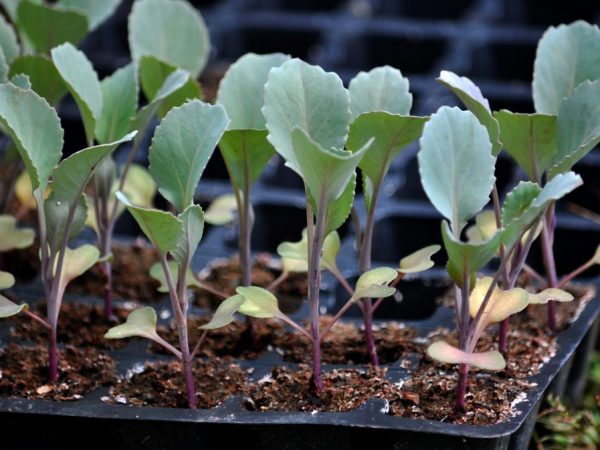Cabbage growing technology
The cultivation of vegetable crops, the homeland of which is not known for certain, was still practiced in Russia. Fiber-rich cabbage is an effective remedy for the normalization of the digestive tract. In winter, it helps prevent the appearance of vitamin deficiency. These are not the only advantages of a vegetable culture, but they are already enough to acquire a bed of green heads of cabbage in a personal plot. Growing a vegetable rich in vitamins and microelements has its own characteristics, therefore it is so important to know how to care for this garden crop.

Cabbage growing technology
Variety selection
Before planting, cabbage is identified with a variety. Recently, cone-shaped vegetable crops and varieties with red leaves are gaining popularity.
Hybrids have been bred that are not afraid of diseases affecting the cultures of the cruciferous family. On the shelves there are hybrids of domestic selection, adapted to the climatic conditions of the country. Also, seeds of Dutch and German selection have proven themselves well in the market. It is better to stop the choice on frost-resistant varieties.
When choosing seeds of white cabbage, pay attention to the timing of the ripening of the vegetable. Ultra-early, early and early maturing varieties have a short shelf life, but early cabbage is a sweet and tender vegetable. Mid-ripening and late-ripening hybrids, according to the description, are distinguished by good keeping quality.
They also pay attention to the purpose of the vegetable culture: some varieties, due to their excellent taste, are suitable for fresh consumption, and some are revealed when salted, pickled or canned.
Seed preparation
Regardless of the method of growing cabbage, the technology for preparing seed material remains unchanged and includes several stages:
- calibration;
- germination assessment;
- disinfection;
- hardening.
Calibration
Some seeds may not be suitable for growing, so a selection is made. The seeds are dipped in salted water for 5-7 minutes. Salt solution is prepared at the rate of 3 g of salt per 100 ml of water. All hollow seeds float to the surface. They are washed free of salt and dried as soon as possible to prevent sprouting.
If the size of cabbage seeds in the pack differs, small planting material is also discarded at the calibration stage.
Germination assessment
To find out if it is possible to get a good harvest from cabbage, it is advisable to assess the germination rate, which will take 7 days. Take part of the seeds that will not be used when planting.
A cloth soaked in water is placed on a tray and the seeds are laid out on it. The same cloth soaked in water is placed on top of the seeds. The samples are left in a room with an air temperature of 22 ° C-23 ° C. Make sure that the cloth covering the seeds is always damp. Instead of a cloth, it is permissible to use paper that does not absorb water well.
After 3-4 days, the first shoots appear, after 7 days all the seeds that should sprout germinate. On the 4th day, you can understand how well the germination of the replaceable material occurs, and on the 8th - how many plants will sprout in general.
To obtain indicative results, it is advisable to test on 100 samples.
You can reduce the cost of the process by self-collecting planting material. The vegetable is propagated by seeds, which can be obtained by planting queen cells (heads of cabbage obtained from seeds) into the ground. Vegetable propagation takes 2 years. Choose a head of cabbage that has a good weight and a small stump. If the mother plant weighs little, then the seeds will be weak. In place of each inflorescence, after flowering, pods are formed, similar to asparagus beans. The seeds are in them. It is important that pollination occurs after the crop has bloomed. To do this, ensure the presence of bees in the personal plot. If the culture does not bloom, artificial pollination is performed.
Disinfection

Seeds are disinfected before planting
So that cabbage grown from seeds does not get sick, it is imperative to disinfect the planting material. There are several effective ways to decontaminate seeds.
Most often, a solution of potassium permanganate is used, in which the planting material is immersed for a quarter of an hour. After the time has elapsed, the seeds are washed. A solution of potassium permanganate is an excellent remedy for diseases of a fungal and bacterial nature.
An alternative to soaking in a solution of potassium permanganate is the so-called blanching. Seed material is placed in an impromptu bag made of gauze, folded in 3-4 layers. The bag is immersed in water at a temperature of 49 ° C for 20 minutes, after which the seeds are taken out and dried.
The last method of disinfection involves the use of garlic. You will need 100 ml of pure water and about 30 g of pre-chopped garlic. The ingredients are mixed, the seeds are placed in the resulting composition. After 60 minutes. they are taken out and dried.
Hardening
In order for the cabbage to be healthy, it is imperative to harden the seed material. To do this, the planting material is placed in a container with water and sent to a room with an air temperature of 2 ° C for a day. The best option is a refrigerator.
Growing seedlings
Cabbage is a plant that is afraid of frost, so cabbage is rarely planted in open ground. If the germination rate has been assessed, seed germination can be skipped. Otherwise, germinated seeds should be planted. They germinate in 3-4 days.
Cabbage seedlings are grown in containers. There are containers, which are a system of connected cups, and there are just rectangular containers. When working with the former, each seed is planted in a separate glass. When sowing seeds in rectangular containers, the distance between future plants is 3 cm. The distance between rows is 7-8 mm. The containers are covered with foil and placed in a warm and sunny place.
If the seeds were planted in a common container, after 7 days they are transplanted into containers, where for each plant there is a separate cell measuring 30 x 30 mm. After 14-20 days, another transplant is made into 60 x 60 mm cups. When transplanting insufficiently strong plants, they are buried to the cotyledon leaves. The plant is transplanted together with a root earthy clod. Plants are in the cups immediately before planting in the ground.
Early cabbage needs additional feeding. The first is produced 14-15 days after germination. At this stage, ammonia nitrate, superphosphate and potassium fertilizer are used in the amount of 2, 4 and 1 g. The dry mixture is diluted in 1 liter of water.
The second feeding is carried out 14-15 days after the first. It contains the same components taken in a double dose. The last feeding is done 48 hours before disembarkation.For its preparation, take the same components, but in the amount of 2, 4 and 8 g. Dilute in 1 liter of water.
For planting seeds and transplanting seedlings, use a special soil, which is sold in specialized stores.
Important points

Seedlings must be hardened
- When growing seedlings, it is important to observe the temperature regime. Before the emergence of shoots, the air temperature should be 20 ° C, after - 17 ° C during the day and 10 ° C at night.
- So that the cabbage does not get sick, the seedlings are hardened. To do this, during the day, they take it out onto the balcony, first for 15-20 minutes, then for 30-40 minutes. Before planting in the ground, the plants are kept on the balcony for about 2.5-3 hours. During hardening, they are positioned so that they are not in direct sunlight.
- A few days before planting, cabbage can be on the balcony all night, but if the air temperature at night drops below 2 ° C, the plants should be brought indoors. Leaving containers with cabbage to spend the night on the balcony, they are covered with foil.
Growing cabbage outdoors
Before harvesting, cabbage goes through a number of stages: transplanting into open ground, leaving.
Planting seedlings in the ground
It is important to plant annual plants in the ground in a timely manner. At the same time, they are guided by weather conditions.
Early cabbage is planted in late April or early May. At the time of planting, 5-7 cabbage leaves should be formed. Plant height should be about 15 cm. Mid-ripening and late-ripening varieties are planted in mid and late May. At the time of planting, the plant should have 4-6 cabbage leaves. Plant height - 17-18 cm.
If at the time of planting in the ground the plants did not reach the required height, and the required number of leaves did not form, you can use growth stimulants.
So that strong plants grow from cabbage, which has not yet gotten stronger, it is planted in a lighted area. Loamy and sandy soils are most suitable for vegetable crops. It is advisable to plant this vegetable crop after root crops, cucumbers, legumes or cereals. Before planting a vegetable crop (and cabbage and other plants are no exception), it is advisable to plant green manure in the area. You can cover immature plants with bottles.
To get a good harvest from cabbage planted in the country, you cannot thicken the planting. It is important to strictly adhere to the planting scheme indicated on the seed package. It differs slightly for different varieties.
So that the cabbage heads do not get sick and have good taste, humus, wood ash and ½ tsp are placed in the holes during planting of seedlings. nitrophosphate. The contents of the hole are mixed, then a seedling with a root earth ball is placed in it.
Planting care
You don't need special care for cabbage. Agricultural technology comes down to timely watering, loosening and removal of weeds. It will be useful to feed the vegetable crop several times.
When cabbage leaves grow, the plant is fed with ammonium nitrate (1 g of saltpeter per 1 liter of water). When cabbage leaves are formed into heads of cabbage, a solution prepared from urea, superphosphate and potassium sulfate, taken in 4.5 and 8 g, respectively, is introduced into the soil. The dry mixture is diluted in 10 liters of pure water.
The lower leaves of the plant are not recommended to be torn off. Only leaf plates affected by pests or diseases are subject to removal.
Disease prevention
It is important that the cabbage does not contain insects that destroy the leaves. As a prophylaxis against parasites settling on cabbage leaves, wood ash is used. Sometimes tobacco dust is added to it.
The first cabbage is grown without the use of fungicides, insecticides and herbicides: the fruit absorbs toxins, therefore, folk remedies are used for preventive treatments, which are easy to prepare with your own hands. This can be an infusion of onion peels.
No less effective is an infusion of tomato tops, which you can cook with your own hands in 15-20 minutes.Before using any do-it-yourself infusions, you need to let them brew. The risk of being attacked by parasites is minimized by growing cabbage with fragrant flowers and herbs (marigolds, cilantro, sage, caraway seeds, etc.).
If a specific disease has manifested itself, use the drug intended for its treatment. Complex drugs are less effective.
According to the latest technology, any kind of cabbage can be grown hydroponically. The covering method is expensive, but the prime cost of the heads of cabbage will justify the costs. With this method, you can skip the stage of growing seedlings.
Beneficial features
Our great-grandfathers knew about the beneficial properties of cabbage, using it from ancient times to treat diseases. Today, cabbage juice of various types or gruel from leaves containing iron, fiber, calcium, iodine and other useful trace elements is used in folk medicine to treat gout, cough, sore throat, bronchitis and kidney disease. Also, the medicinal properties of the vegetable crop help people relieve headaches. If you have a headache, you can attach a cabbage leaf to your temples. It is advisable to pre-mash it so that the juice appears. The medical effect is explained by the fact that the head hurts, as a rule, with high or low blood pressure, and the potassium contained in cabbage leaves normalizes blood pressure.
Fresh cabbage leaves can be regarded as a remedy for bruises. The vegetable is used in folk medicine and to normalize the functioning of the nervous system.
Application
Cabbage contains from 15 to 30 kcal, depending on its variety, therefore it is a dietary product. Least of all kcal in Beijing.
It is best to consume fresh cabbage. You can also pickle it, make sauerkraut. You can simply cut the head of cabbage into slices, season with oil and spices to taste. This is the easiest recipe. Such food is not only healthy, but also delicious. Cabbage goes well with rice, so cabbage rolls can be made.

